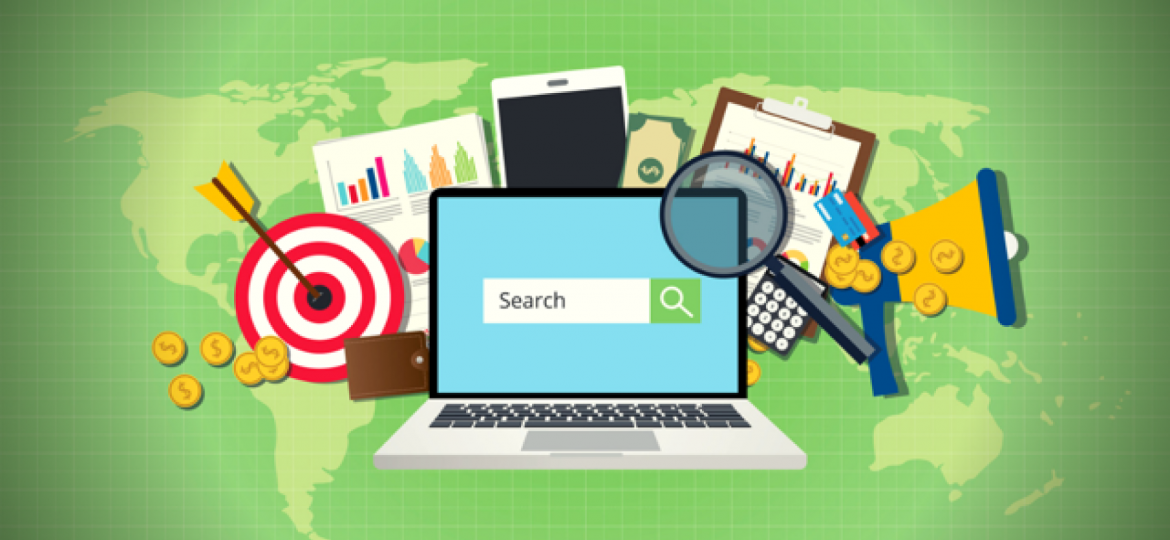
There are millions of people purchasing products and services at any given time. Yours could be one of them.
For that to happen, you need to show up where people are looking. Today, that’s the internet.
You also need to understand what motivates consumer buying behavior so you can target those motivations with business-to-consumer (B2C) marketing.
But before we get into what local SEO is and how paid advertising can get you ranking on the front page, let’s cover some basics.
What Is B2C Sales?
There is a big difference between selling a product to a person and selling a product to a business. Understanding this difference can help you better market your product to customers.
Businesses selling to other businesses is known as business-to-business (B2B) sales, while businesses selling to consumers is known as business-to-consumer (B2C) sales.
Businesses and consumers make purchases in very different ways. Businesses tend to form buying habits around logic, patience, research, and the compilation of facts. This often results in a long sales cycle with a lot of competition.
Individual consumers, on the other hand, have a very different purchasing pattern. They tend to buy much more from a place of emotion, impulsivity, and don’t need as many facts.
Since you’re here, I’m going to guess you’re a business selling to a consumer. This is good news for you because the sales cycle is usually much shorter and you can more easily convince consumers to buy your products than businesses.
So how do you get consumers to buy your product or service? Through business-to-consumer marketing.
What Is B2C Marketing?
Business-to-consumer marketing is the process of targeting the buying habits of individual people in an attempt to get them to purchase your product or service.
By understanding individual buying habits and then targeting those behaviors, you can get people to purchase your product more than your competitors. There are plenty of B2C marketing strategies out there so why do so many businesses still struggle to sell their products to consumers?
To begin with, many businesses don’t even understand how the B2C sales and marketing process works. Instead of trying to sell their products through emotion and appealing to the natural tendencies of human beings, they apply too much logic and information trying to convince people why their product is best.
But not you. You’ve already learned what B2C sales and marketing are about and you want some strategies that work.
Most B2C marketing strategies you read about are outdated, provide bad information, and fail to tackle the most important place for businesses to market to consumers: search engines.
Times have changed and traditional marketing is being overtaken by search engine marketing. It’s the businesses that keep up with the changes that will succeed.
What is Search Engine Marketing?
Search engine marketing (SEM) is the process of gaining traffic and visibility by appearing in search engines (Google & Bing) when people are searching for the kinds of products and services you offer.
Around 90% of people search online to research and purchase products. The process of appearing in the search results is the consequence of good SEM.
For example, let’s say you’re a dentist. To get more patients, your practice needs to appear when people search online for terms like, ‘dentist near me.’
While many businesses selling to consumers are starting to understand search engine marketing plays a large role in their success, many don’t know how it actually works or how to use it effectively.
You don’t have to be like them. Follow these B2C Search Engine Marketing strategies and you’ll get the ammunition you need to outrank your competitors.
How To Use SEM To Grow Your Business
Despite all the seemingly confusing acronyms like B2C and SEM, understanding what you need to be effective at search engine marketing isn’t too difficult.
There are a few different marketing channels that can get you ranking on the front page of search results. And let’s be honest, you need to be ranking on the front page.
More than 75% of all clicks are from the front page. So if you’re not appearing there, you’re not doing search engine marketing right.
Search Engine Paid Advertising
Like it or not, paid advertising is likely going to be necessary if you want to perform well in search engine marketing.
While there are different forms of paid advertising, you want to focus on advertising that can get you ranking on the front page. That means pay-per-click (PPC) ads on Google.
When done effectively, not only will PPC ads get you ranking on the front page, they can get you to the number one position. Plus, when your ads are set up right, they’ll only appear when your exact audience is searching for your product or service.
Paid advertising is the hammer on the toolbelt for search engine marketing. It can nail down qualified traffic and good business when done right. But you gotta pay to play.
B2C Paid Advertising Strategies
- Focus on niche audiences and personalize your ads to appeal to them. The more a consumer believes you’re speaking directly to them, the more likely they are to buy from you.
- Develop landing pages designed to convert. When someone clicks your ad, direct them to these landing pages. Since they’ll be optimized for conversion, you’re more likely to get them to take the action you want than simply sending them to your website.
- Ensure your ad copy matches the language on the page the ad will take them to. This will make the experience for your customers better, as well as improve your ad quality score.
- Use simple language and tell the customer exactly what you want them to do in both your ad and landing page.
- Provide value, promote a special offer, or give something away for free. Customers need a reason to click on your ad and they want to feel good about buying from you.
- Stand out. Look at the other paid ads for similar products or services. What are they doing and how can you make yours different?
Search Engine Optimization
You can either pay to show up in search engines through advertising or rank organically through search engine optimization. Of course, it’s easier to pay to play but if you want a sustainable, long-term business, focusing on SEO is important.
Plus, paid advertising can get expensive. When SEO is done right, you can get free traffic from an audience that is your ideal customer.
SEO Strategies
- Focus on a niche audience. You shouldn’t be interested in getting everyone’s attention – you just need to attract your audience’s attention.
- Create content that solves your customer’s problems and addresses their needs. As they search to solve these problems on Google, you have a much better chance of showing up.
- Ensure your website is fully optimized. That means your headers, page titles, navigation, website structure, and content are created and organized with search engines in mind. This is called Onsite SEO.
- You also need to focus on Offsite SEO for search engine marketing. In order for Google to rank you more consistently, it needs to trust your website so you want to build ‘authority’ to it. A couple examples of boosting Offsite SEO include press releases, or doing guest blog posts. The more popular or more authority the linking site has, the more SEO juice and authority your site will get.
Search Engine Marketing Tips
Marketing to consumers can be competitive so you want to ensure you do everything you can to get an edge on your competitors.
Now that you understand the different channels for search engine marketing, here are some of the best tips to follow for B2C companies using SEM.
Track Everything
Despite all the different tools to track the effectiveness of marketing, many businesses still have a hard time actually doing it. But this is critical if you want to have a successful SEM campaign.
If you’re not tracking what is and isn’t working, your competition will and they’ll likely get better results.
A/B Test
When you’re effectively able to track, you’re able to test. And if you want high performing campaigns, you need to run lots of tests to figure out what works.
Even when you discover something that works, there’s a way to make it better. Change a headline or modify a color and test the performance. The more you’re able to identify strategies that work, the more conversions you’ll get.
Mobile-First Design

More than 95% of internet users search on their phones to find information on local products and services. Therefore, you need to think ‘mobile-first’ when you design your search engine marketing user experience.
Whether that means designing your landing page for mobile or your entire website, ensure it’s not only user-friendly but optimized for conversions.
Have A Social Media Presence
Social media marketing is different from search engine marketing but that doesn’t mean social media won’t help your SEM campaign. A strong social media presence will help provide users with a sense of ‘social proof,’ trust, and give your brand exposure.
Plus, your social media could create mentions from other brands or websites which will help boost SEO.
Focus on a Niche Audience
In case you didn’t catch the drift earlier, you need to focus on a niche audience. This is important for paid advertising, SEO, content creation, and boosting conversions – basically everything within the domain of search engine marketing.
At first, it may feel like you’re not casting your net wide enough but be patient.
Produce Engaging Content
This tip is also effective in improving paid advertising, SEO, and boosting conversions. The more you’re able to create content that makes the reader feel like you understand them and are speaking to them, the more likely your ads will be clicked, the more you’ll show up in search results for people searching for specific terms, and the more likely people will buy your product or service.
Plus, your content will be more engaging and people will value your brand more.
Increase Your Website Speed
This is one of the best ways to get more conversions and boost your onsite SEO. More than 50% of internet users exit a page if it takes more than 3 seconds to load. So you want to ensure your site is lightning-fast.
Google also values pages that load quickly because it provides a better user experience. To increase your website speed, compress your images, use a fast website host, avoid large files, and don’t try to get too fancy with animations or code.
Track Your Competitors
I mentioned B2C SEM is competitive, right? If you want the edge, you need to track your competitors paid advertising, SEO ranking, content creation, and social media presence.
Not only will they give you clues as to how to one-up them, but they might also offer valuable information about your audience you didn’t know.
Improve Your Search Engine Marketing Performance Today
B2C businesses are always looking for new ways to target their consumers. Today, Search Engine Marketing is undoubtedly one of the best.
If you’re looking for a leg-up on your competition, follow these SEM strategies. It may take a few months to see real results but if you stay consistent, you’ll likely start to outrank your competition, get more traffic, and grow your business.
Or you can let the search engine marketing professionals handle it and hire a digital marketing agency that knows how to get the job done.

